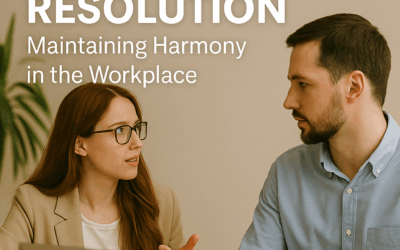In today’s fast-paced business world, staying ahead isn’t just about cutting-edge technology or competitive pricing—it’s about cultivating an environment where creativity and innovation are integral to your business strategy. Entrepreneurs and small business owners now recognize that a dynamic work setting, built on workplace innovation strategies for a creative culture, is vital for long-term success and sustainable growth.
Creating a workplace where innovation is both encouraged and embedded in daily practices requires thoughtful planning and commitment. It goes far beyond decorating an office with vibrant colors or organizing sporadic brainstorming sessions. Instead, it involves fostering a mindset where every team member believes they can contribute ideas that spark the next big breakthrough.
Understanding the Value of a Creative Culture
A creative culture is more than a trendy term—it’s a transformative strategy that redefines how a company operates. For entrepreneurs and small business owners, integrating innovative techniques to enhance workplace creativity results in increased productivity, higher employee satisfaction, and ultimately, improved profitability.
At its core, a creative culture empowers employees to communicate openly, share ideas without fear of judgment, and take calculated risks in problem-solving. When everyone feels empowered, they are more likely to challenge conventional processes and explore innovative methods. This environment leverages the diverse talents of the workforce, leading to breakthrough innovations that can reshape entire industries.
Numerous companies have reaped impressive benefits by incorporating these principles into their daily routines. Businesses known for their dynamic environments report a constant flow of creative solutions generated through regular idea exchanges among employees—a significant advantage for small companies looking to stand out in competitive markets.
Nurturing an Environment for Innovation
Building a workplace that truly supports innovative thinking requires a multifaceted approach. Entrepreneurs should blend structural and cultural changes to create an environment that values creativity throughout all aspects of operations. Offering flexible working hours, open office layouts, and opportunities for cross-department collaboration can signal that the organization prizes creativity as much as it does productivity.
Leadership plays a crucial role in this process. When leaders share their experiences, admit mistakes, and actively seek feedback, they set a powerful example of risk-taking and continuous learning. A management team that is open to experimenting and learning from failures inspires employees to pursue their ideas without hesitation.
Structured brainstorming sessions and innovation workshops can also significantly boost creativity. Rather than being one-off events, these sessions should be an integral part of the company culture, reinforcing the organization’s commitment to an ongoing flow of ideas. Incorporating agile methodologies or lean startup principles further accelerates the transformation of ideas into actionable projects.
Implementing Workplace Innovation Strategies
Embedding innovation into the fabric of your organization begins with establishing clear workplace innovation strategies for a creative culture. Start by assessing your current work environment and identifying any barriers to creativity—whether bureaucratic hurdles or communication silos—and then streamline processes to promote agility and open dialogue.
One effective strategy is to rotate roles or cross-train employees. This exposes team members to different aspects of the business, encourages empathy, and fosters a comprehensive understanding of operations. Such measures break down silos and enhance the likelihood of fresh, innovative ideas emerging from varied perspectives.
Leveraging technology to facilitate collaboration is another key approach. Digital tools can create virtual brainstorming spaces, enhance file sharing, and maintain active communication channels beyond regular office hours. This strategy is particularly valuable in today’s hybrid work environments, where physical presence is not always necessary for effective collaboration.
Additionally, small business owners should explore external resources to further inspire their teams. A recent article in Forbes highlighted the importance of environments where employees actively contribute to a company’s trajectory. Such insights from third-party experts can provide valuable guidance in sustaining a cycle of continuous innovation.
Cultivating a Long-Term Innovation Mindset
Transitioning to a creative and innovative workplace culture is a long-term commitment that requires ongoing effort and adaptability. Businesses must continuously revisit their innovation strategies and embrace change as an essential component of growth.
This commitment begins with recruitment. Hiring individuals who thrive in dynamic environments reinforces a culture of innovation from day one. During interviews, assessing candidates for problem-solving abilities, curiosity, and adaptability can reveal their potential to contribute to a creative culture, beyond just their technical skills.
To further embed creative thinking, many organizations develop internal training programs focused on problem solving and creative thinking. Workshops that incorporate role-playing, scenario challenges, or even creative retreats empower employees to unlock new ways of thinking, establishing innovation as a core component of everyday operations.
Recognizing and celebrating even the smallest creative efforts is crucial. By acknowledging team members who propose innovative solutions or challenge conventional norms, you reaffirm the value of creative risk-taking. This not only motivates employees but also reinforces the importance of a vibrant, innovative culture for long-term success.
For additional insights and strategies, resources such as Innovative Business Perspectives can offer practical guidance. Drawing on the expertise of seasoned entrepreneurs provides a roadmap for implementing robust workplace innovation strategies that nurture a creative culture.
Investing in innovative practices also significantly enhances employee retention and satisfaction. In today’s competitive job market, talented professionals seek companies that invest in their growth and offer the freedom to be creative. By fostering an inclusive, innovative environment, businesses drive performance, boost job satisfaction, reduce turnover, and build a cycle of continuous improvement.
In summary, creating a creative workspace is a dynamic process that extends beyond physical office design—it demands a deep integration of mindset, leadership, and practical methodologies that evolve over time. Today’s entrepreneurial landscape is ripe with opportunities for those ready to embrace change; the time to act is now if you want to leave a lasting impact on your industry.
Building a culture where every team member feels empowered to contribute can redefine your organization’s future. Whether you are a seasoned entrepreneur or at the beginning of your business journey, integrating innovative techniques to enhance workplace creativity is a strategic investment in your company’s long-term success. By nurturing a creative culture, you pave the way for groundbreaking innovations and a resilient, dynamic work environment.
- Adopt a holistic approach to nurturing a creative work environment.
- Implement structured yet flexible strategies to unlock team innovation.
- Leverage both internal and external resources to cultivate a creative culture.
- Recognize and reward creative contributions to drive long-term growth.









